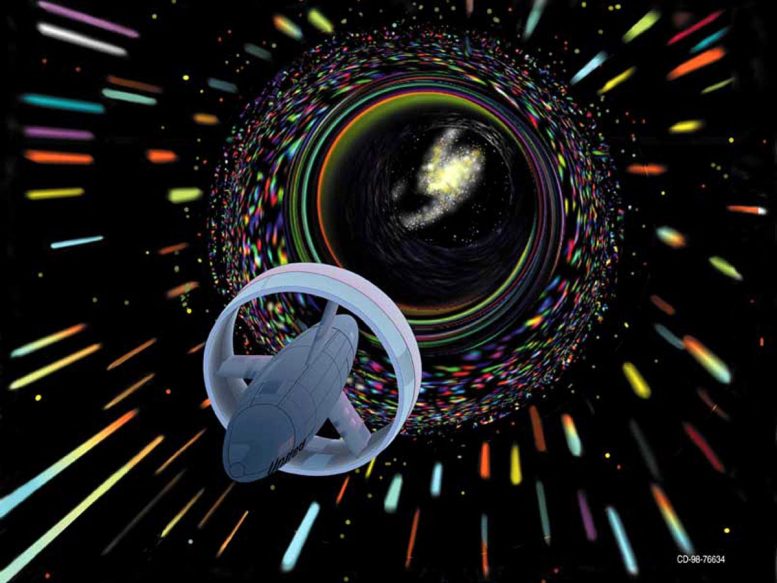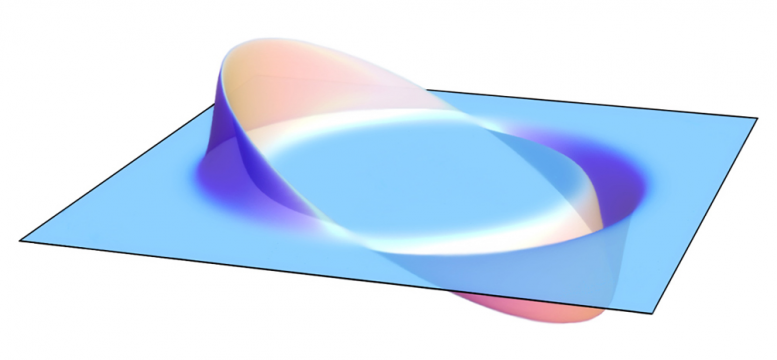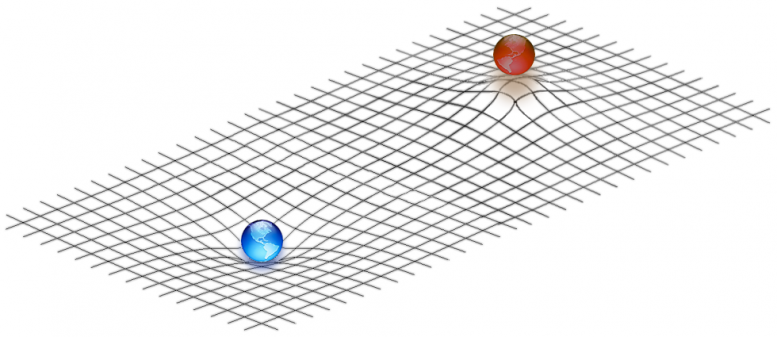
Faster than light travel is the only way individuals could ever get to other stars in a reasonable amount of time. Credit rating: NASA
The closest star to Earth is Proxima Centauri. It is about 4.25 light-yrs away, or about 25 trillion miles (40 trillion km). The quickest at any time spacecraft, the now-in-room Parker Photo voltaic Probe will get to a top rated velocity of 450,000 mph. It would consider just 20 seconds to go from Los Angeles to New York Metropolis at that pace, but it would get the photo voltaic probe about 6,633 years to arrive at Earth’s nearest neighboring photo voltaic procedure.
If humanity ever wishes to travel effortlessly amongst stars, men and women will want to go speedier than light. But so much, a lot quicker-than-gentle vacation is feasible only in science fiction.
In Issac Asimov’s Basis series, humanity can travel from earth to planet, star to star or throughout the universe employing bounce drives. As a kid, I study as several of those people stories as I could get my palms on. I am now a theoretical physicist and analyze nanotechnology, but I am nevertheless fascinated by the means humanity could a single day travel in room.
Some people – like the astronauts in the motion pictures “Interstellar” and “Thor” – use wormholes to journey between photo voltaic units in seconds. One more strategy – common to “Star Trek” enthusiasts – is warp drive technological innovation. Warp drives are theoretically doable if however significantly-fetched technology. Two latest papers made headlines in March when researchers claimed to have defeat just one of the quite a few challenges that stand involving the principle of warp drives and truth.
But how do these theoretical warp drives truly perform? And will individuals be making the bounce to warp pace anytime shortly?

This 2-dimensional representation shows the flat, unwarped bubble of spacetime in the center exactly where a warp drive would sit surrounded by compressed spacetime to the suitable (downward curve) and expanded spacetime to the still left (upward curve). Credit: AllenMcC/Wikimedia Commons
Compression and expansion
Physicists’ recent comprehending of spacetime will come from Albert Einstein’s idea of Basic Relativity. Normal Relativity states that room and time are fused and that absolutely nothing can vacation speedier than the speed of gentle. Standard relativity also describes how mass and energy warp spacetime – significant objects like stars and black holes curve spacetime about them. This curvature is what you truly feel as gravity and why many spacefaring heroes be concerned about “getting trapped in” or “falling into” a gravity effectively. Early science fiction writers John Campbell and Asimov saw this warping as a way to skirt the velocity restrict.
What if a starship could compress space in front of it although growing spacetime driving it? “Star Trek” took this concept and named it the warp push.
In 1994, Miguel Alcubierre, a Mexican theoretical physicist, showed that compressing spacetime in front of the spaceship even though increasing it powering was mathematically probable within the legislation of Typical Relativity. So, what does that signify? Picture the length among two details is 10 meters (33 toes). If you are standing at position A and can vacation a person meter for each 2nd, it would acquire 10 seconds to get to position B. Nevertheless, let’s say you could by some means compress the place among you and position B so that the interval is now just a person meter. Then, going through spacetime at your highest speed of a person meter for every second, you would be capable to arrive at stage B in about one particular next. In concept, this approach does not contradict the guidelines of relativity given that you are not moving a lot quicker than light-weight in the house about you. Alcubierre showed that the warp push from “Star Trek” was in reality theoretically doable.
Proxima Centauri in this article we arrive, appropriate? Unfortunately, Alcubierre’s process of compressing spacetime had one particular dilemma: it demands negative strength or negative mass.

This 2–dimensional illustration reveals how constructive mass curves spacetime (left side, blue earth) and destructive mass curves spacetime in an reverse direction (appropriate aspect, crimson earth). Credit score: Tokamac/Wikimedia Commons, CC BY-SA
A detrimental strength trouble
Alcubierre’s warp travel would do the job by making a bubble of flat spacetime about the spaceship and curving spacetime close to that bubble to cut down distances. The warp travel would need both adverse mass – a theorized kind of issue – or a ring of detrimental strength density to function. Physicists have never observed destructive mass, so that leaves damaging strength as the only choice.
To produce negative strength, a warp push would use a large quantity of mass to develop an imbalance among particles and antiparticles. For example, if an electron and an antielectron seem near the warp push, just one of the particles would get trapped by the mass and this results in an imbalance. This imbalance effects in unfavorable power density. Alcubierre’s warp push would use this damaging energy to build the spacetime bubble.
But for a warp generate to crank out adequate damaging power, you would need a ton of make a difference. Alcubierre estimated that a warp travel with a 100-meter bubble would have to have the mass of the overall visible universe.
In 1999, physicist Chris Van Den Broeck showed that growing the quantity within the bubble but trying to keep the surface area space regular would lower the energy demands considerably, to just about the mass of the sun. A important enhancement, but even now much beyond all simple alternatives.
A sci-fi potential?
Two recent papers – one by Alexey Bobrick and Gianni Martire and an additional by Erik Lentz – give remedies that appear to be to carry warp drives closer to fact.
Bobrick and Martire recognized that by modifying spacetime within just the bubble in a specific way, they could get rid of the need to use adverse electrical power. This solution, nevertheless, does not develop a warp travel that can go faster than light.
Independently, Lentz also proposed a remedy that does not call for unfavorable electricity. He utilised a different geometric method to address the equations of Typical Relativity, and by executing so, he identified that a warp push would not have to have to use negative electricity. Lentz’s option would make it possible for the bubble to travel speedier than the pace of light.
It is vital to stage out that these exciting developments are mathematical models. As a physicist, I won’t thoroughly believe in versions until eventually we have experimental proof. Nevertheless, the science of warp drives is coming into watch. As a science fiction admirer, I welcome all this innovative pondering. In the words and phrases of Captain Picard, factors are only extremely hard until they are not.
Created by Mario Borunda, Affiliate Professor of Physics, Oklahoma State University.
At first revealed on The Discussion.

